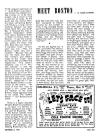| Home Page
Meet Boston Menu
The original peninsula on which Boston was located was a small one, shaped much like a cross, or, to be more correct, like a clover or like a club-suit of cards. At the south was the narrow stem, the Neck, connecting Boston with Roxbury, a long, narrow sand-bar between two bays called Back Bay and South Bay. It followed the lines of present Washington Street from about Kneeland Street in Boston to Eustis Street in Roxbury. It was the nucleus of the South End, which was also called the Neck long after Back Bay was filled in. A standard “crack” of sixty years ago was: “Why are Roxbury street cars like a necktie?” “Because they go over the Neck and back.” The northern and western knobs of the “clubs” were the North End and the West End respectively. The eastern headland was Fort Hill and between it and the North End was the original harbor, a cove since filled in by the leveling of Fort Hill. Both the northern and eastern headlands had forts, called the North Battery and South Battery respectively―the name Battery Street is a memorial of the former. The name of Fort Hill (now no longer a hill) comes from the location of the South Battery, whose approach used to be called The Battery March―now Batterymarch Street. * There is a region disputed between Brookline and Boston―at least it is a territory in Boston possession but originally part of Brookline. This is the former Charles River shore of Brookline, now covering Cottage Farm and the Kenmore Square section. The narrow strip of river shore at Cottage Farm connecting Boston with Brighton, and keeping Brookline a few hundred feet from the river, has been compared to Alsace-Lorraine for the number of times it has changed hands, and to the Polish Corridor for its geographical location. The old Oxford Press building, the landing of the Cottage Farm Bridge, and the National League ball park, are in this “Corridor.” * As the old legend has it, back just before the Revolution, there was a man named Peter Rugg who lived on Middle Street (now part of Hanover Street) in Boston. One day he drove out to Concord with his little girl, and, when ready to return in the evening, he was warned of an approaching storm and advised not to go back then. He ignored the warning, however, and Rugg and his little daughter started for Boston in his chaise. A violent storm blew up, and they did not arrive home; nor was any trace of them found. But for many years later, at various points in this country, the apparitions of a man and a little girl were seen, driving in a chaise, the man always inquiring the way to Boston. He was seen thus in Virginia, thinking the new-built town of Washington ahead of him to be Boston; and again on a ferry from Paulus Hook (Jersey City), telling his neighbors on the boat that the river they were on was the Mystic, and that the town ahead was Boston. These appearances were supposed always to presage a storm. He finally reached Boston in 1825, after fifty years of wandering, just in time to see his house and belongings sold at auction. Then he vanished, and was never seen since. Does he remain as the benevolent spirit of the North End? At any rate, his wanderings are now over―his spirit has reached its great goal, Boston.
|
